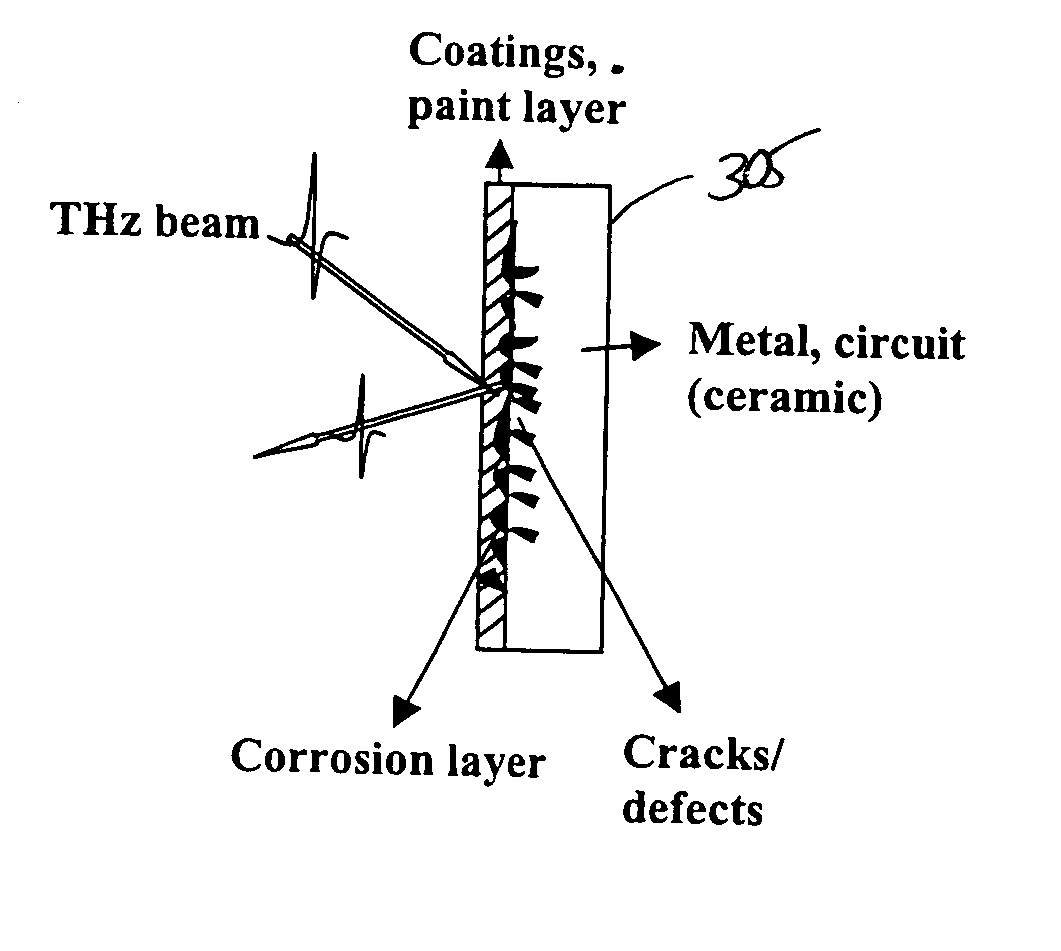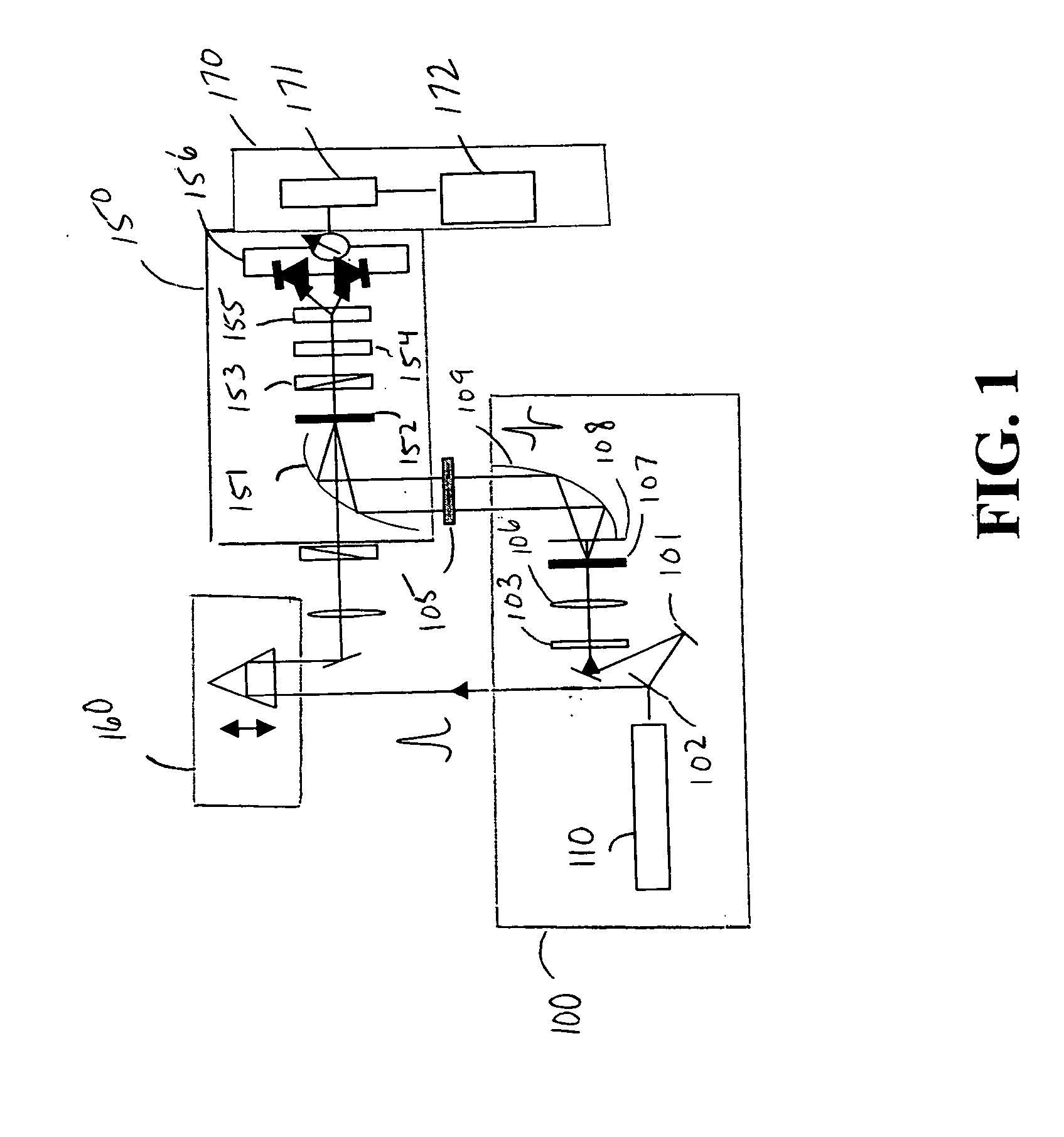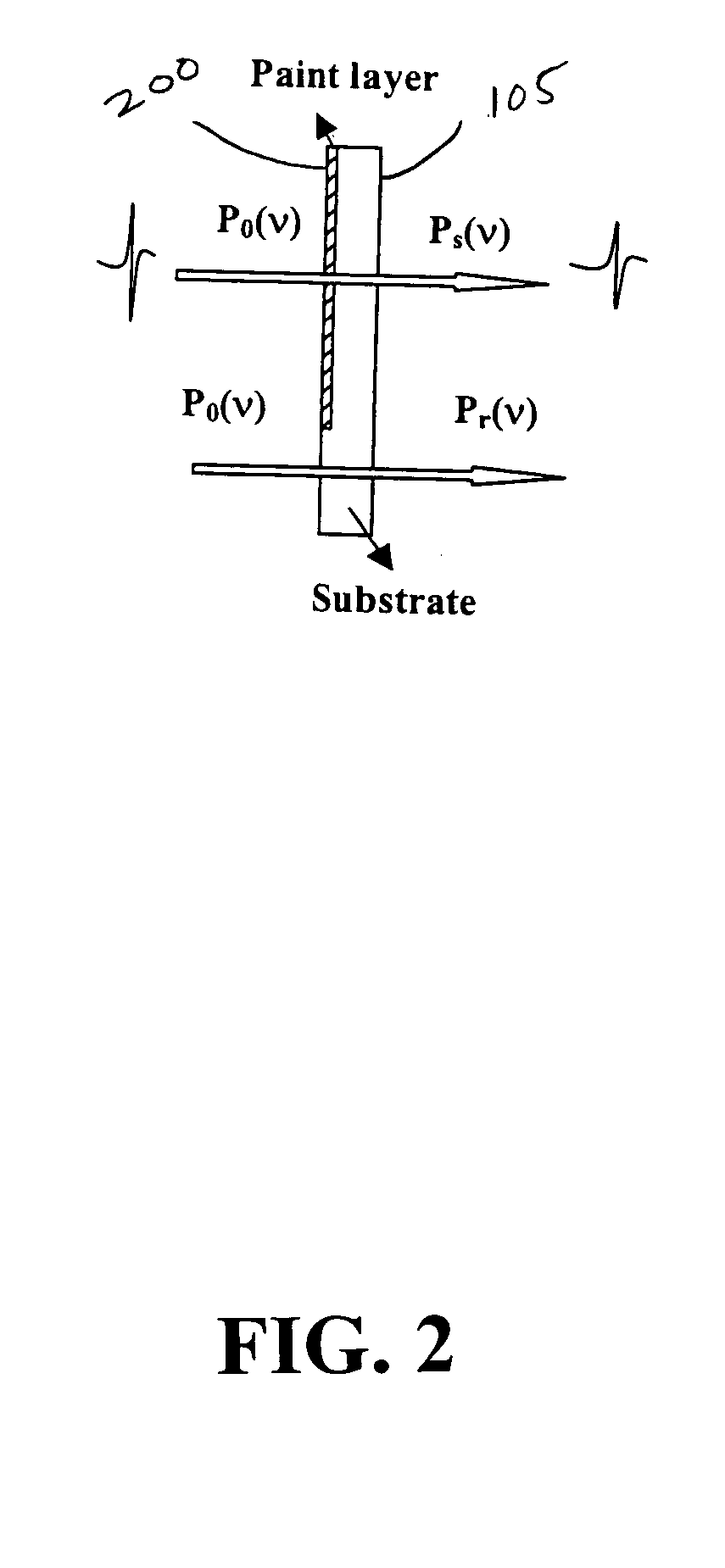Systems and methods for non-destructively detecting material abnormalities beneath a coated surface
a technology of non-destructive detection and material abnormalities, applied in the direction of optical radiation measurement, instruments, machines/engines, etc., can solve the problems of damage to the material under the paint or coating, and inability to detect the abnormality by visual inspection,
- Summary
- Abstract
- Description
- Claims
- Application Information
AI Technical Summary
Problems solved by technology
Method used
Image
Examples
first embodiment
[0049]FIG. 2 is a cross-sectional view of a sample deposited on a polyethylene substrate to measure an optical transmission of a paint according to the present invention. The sample 105 includes a paint layer 200 deposited on the polyethylene substrate to measure the optical transmission of the paint against frequency (wavelength). Assuming the non-absorbing substrate has a refractive index of ns=1.52±0.01 at 300 K, the transmittance of the paint at different frequencies T(v) can be calculated from Equation (1). T(v)=4np2(1+ns)2(1+np)2(np+ns)2·Ps(v)Pr(v)(1)
[0050] In Equation (1), Ps(v) and Pr(v) are the transmitted powers of the THz light through the paint layer 200 and a reference, i.e., the non-covered portion of the substrate, respectively. np is the group refractive index of paint. Preferably, the thickness of the polyethylene substrate is approximately 4.0 mm to avoid interference peaks in the THz profile in the studied time zone arising from multiple reflections from th...
second embodiment
[0057]FIG. 4 is a cross-sectional view of a sample deposited on a polyethylene substrate to measure an optical transmission of a paint system according to the present invention. Referring to FIG. 4, the THz light focused to a diffraction-limited spot on the sample 305, and the reflected THz waveforms are acquired and processed in real time at each point of the sample. Preferably, the sample is scanned in x and y directions at a rate of approximately 10-20 pixels / s to form an image in the computer 172. By analyzing the temporal waveform reflected from the sample 305 at every pixel of the object in real time, information on the surface of the sample 305 can be inferred in many cases. Information under coatings of circuit boards, computer chips, bridges, boats, etc., about defects can be obtained using THz-TDS.
[0058] In lab experimentation, the THz transmittance spectra of paints and primers were obtained by measuring the transmitted power of Ps(v) and Pr(v) by THz-TDS and calculating ...
PUM
 Login to View More
Login to View More Abstract
Description
Claims
Application Information
 Login to View More
Login to View More - R&D
- Intellectual Property
- Life Sciences
- Materials
- Tech Scout
- Unparalleled Data Quality
- Higher Quality Content
- 60% Fewer Hallucinations
Browse by: Latest US Patents, China's latest patents, Technical Efficacy Thesaurus, Application Domain, Technology Topic, Popular Technical Reports.
© 2025 PatSnap. All rights reserved.Legal|Privacy policy|Modern Slavery Act Transparency Statement|Sitemap|About US| Contact US: help@patsnap.com



